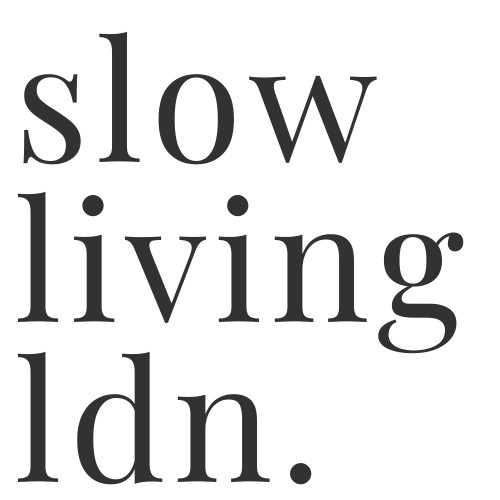You have no items in your cart. Want to get some nice things?
Go shopping
Life isn’t always a gentle cruise along the slow lane.
How busy or stressed we feel, and the hurdles we encounter, tend to come in unpredictable peaks and troughs. In those peaks, it’s harder to slow down, or even to recognise how fast we’re going. This is completely normal, as explained in the brilliant book SLOW by Brooke McAlary; “This isn’t a race with a start and finish line. This is slow, imperfect, intentional and evolving”.
We’re all prone to ‘backslide’ during challenging times, when
our best intentions for slow living and self-care quickly go out of the window, even though making time to look after ourselves in times of stress, and activating our soothing system, can actually help us navigate them better. When these busy moments become prolonged and we find ourselves living with autopilot and adrenaline firmly switched on, there tends to be one inevitable destination: burnout.
“Be fast when it makes sense to be fast, and be slow when slowness is called for. Seek to live at what musicians call the tempo giusto — the right speed.”
Carl Honoré – In Praise of Slow
In our recent survey, the most popular motivation for slowing down was a desire to become more mindful and improve one’s sense of well-being (77.4% of respondents selected this answer). If this is one your motivations, but you find yourself heading for destination burnout, try answering our SOS slow living circuit breaker questions below.
If you’re new to the concept of slow living, you may want to start with our guide on how to slow down.
Most Popular Motivations for Slowing Down
- A desire to become more mindful and improve well-being
- A desire to reconnect with nature and the seasons
- A desire to spend more time doing things you enjoy, such as hobbies
- A desire to adopt a more eco-conscious lifestyle and slow consumption
- A desire to manage work-related stress
- A desire to spend more time with loved ones
- A desire to switch off from technology
Slow Living LDN. survey, June 2022.
SOS Slow Living Circuit Breakers to Answer When Facing Burnout
The following questions are designed to create a circuit breaker moment. This means pausing to recognise how you’re feeling and what’s contributing to your sense of burnout, a lack of motivation, or other symptoms of prolonged stress or busyness. This reflective exercise is an act of slow living in itself! To start, grab a pen and paper, then take a few notes around your answers to the below questions.
#1 What word first comes to mind to sum up how you’re feeling right now?
#2 What word sums up how you’d like to be feeling right now?
#3 What would need to change to help you achieve that feeling?
#4 List what’s most important to you in life (your values). Now write down how much time each week you tend to spend living by each of your values. E.g. if you value exercise and getting outdoors, how much time do you spend doing this each week?
#5 What would you need to do less of to be able to increase how much time you spend living by each of your values?
What now? Your answers should help you gain some perspective in order to understand how you can live better, not faster. Often, there’s a disconnect between what we value most in life and how we’re spending the majority of our time. Plus, in the words of Mike Vance, “slowing down is sometimes the best way to speed up.”
Building moments of everyday deceleration into your routine, or mini slow living pauses, can, once you’ve broken the circuit of burnout, be a practical way to hold onto your sense of slow. To understand more about what’s happening to your mind and body when you’re ‘always on’, read our guide to the soothing system and other emotional regulation systems.
